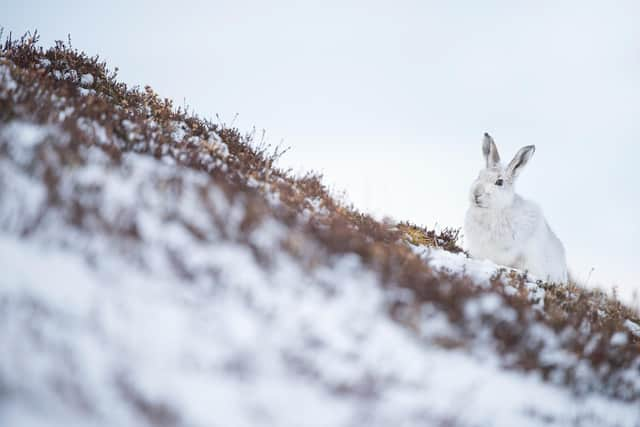Fight continues to protect iconic mountain hares - James Silvey
This article contains affiliate links. We may earn a small commission on items purchased through this article, but that does not affect our editorial judgement.


The story of why mountain hares became a protected species starts with grouse and the business of driven grouse shooting which relies on large numbers of these birds to be shot at the end of the summer. The main techniques to achieve these large numbers are disease management, predator control and regular burning of vegetation to promote fresh heather growth. Like grouse, mountain hares feed on heather and have similar predators so conditions on grouse moors also benefited this species and as such many of their stronghold sites were often associated with grouse moors. That was until a change of management in the 1990s.
Through the late 1990s and 2000s tens of thousands of mountain hares were routinely shot on grouse moors across the species stronghold sites. This was in the misguided attempt of reducing tick numbers which could transmit an often-fatal disease to grouse chicks known as louping ill.
Advertisement
Hide AdAdvertisement
Hide AdThe scale of killing was alarming and, in an effort to control the culls, Scottish Government introduced a closed season in 2011 and called for voluntary restraint in 2014. Neither effort worked and pictures of culls and dumped dead hares continued to appear in the media. Estimates at the time gave figures of 26,000 hares killed annually. However, the actual figure was likely much higher.


Despite the concern, evidence of what effect such heavy persecution was having on mountain hare populations was in short supply until 2018, when two independent scientific papers were published that came to similar conclusions; mountain hares had declined, with the analyses from one paper showing that these declines had been catastrophic in areas that were predominantly managed for grouse.
This new evidence, coupled with an admittance from Scottish Government that mountain hares were in “unfavourable conservation status” led to a change in the law in 2019 – spearheaded by Green MSP Alison Johnstone – and protection for the species in 2020.
Unfortunately, the story doesn’t finish here. Whilst mountain hares now are a protected species, NatureScot are still able to issue licences to individuals to kill mountain hares for specific reasons, such as the protection of young trees. In the past with species like beavers, we have seen how these licences can be used to kill significant numbers of animals. From 1st March 2021 when mountain hare protection came into effect to 28th February 2022, 51 licences for lethal control were approved by NatureScot with an estimated 3000 hares licenced to be shot.
Compared to the estimated 26,000 killed annually before protection, this may seem to be a significant improvement. However, it is important to know where these hares were killed, over what area, for what purpose and crucially if lethal control really was the only option as opposed to non-lethal measures such as fencing.
Species like mountain hare are protected for a reason, and it is vitally important that any licences that are issued are done so only as a last resort and with the highest safeguards in place to prevent any population decline both nationally and locally.
Having fought so long for protection of this upland species RSPB Scotland will continue to monitor the management of mountain hares closely and call for the increased use of non-lethal measures where available. In addition to this, complete transparency is required when it comes to all species licensing so that data on numbers of licences approved, numbers of animals killed and for what purpose are freely available and where necessary challenged.
James Silvey, Senior Species and Habitats Officer, RSPB Scotland
Comments
Want to join the conversation? Please or to comment on this article.